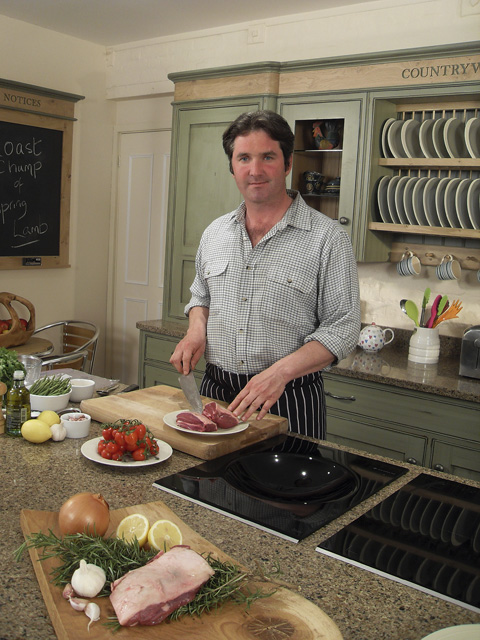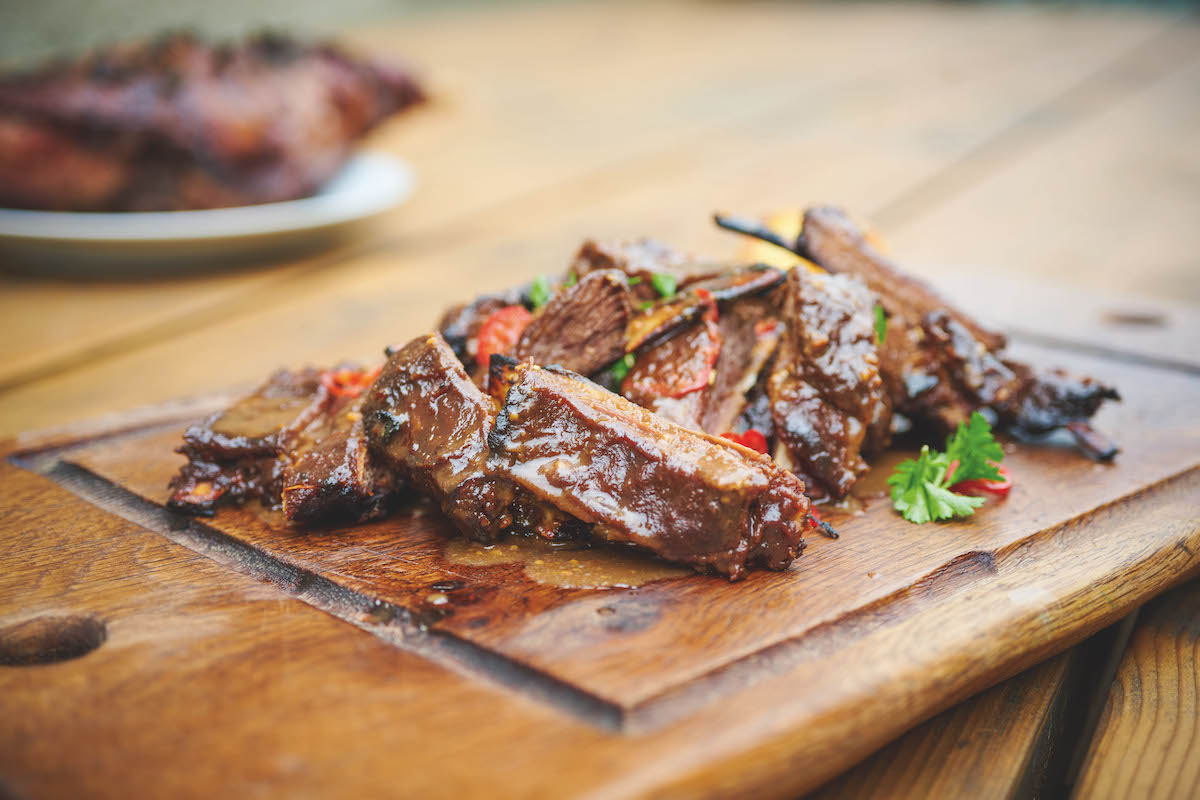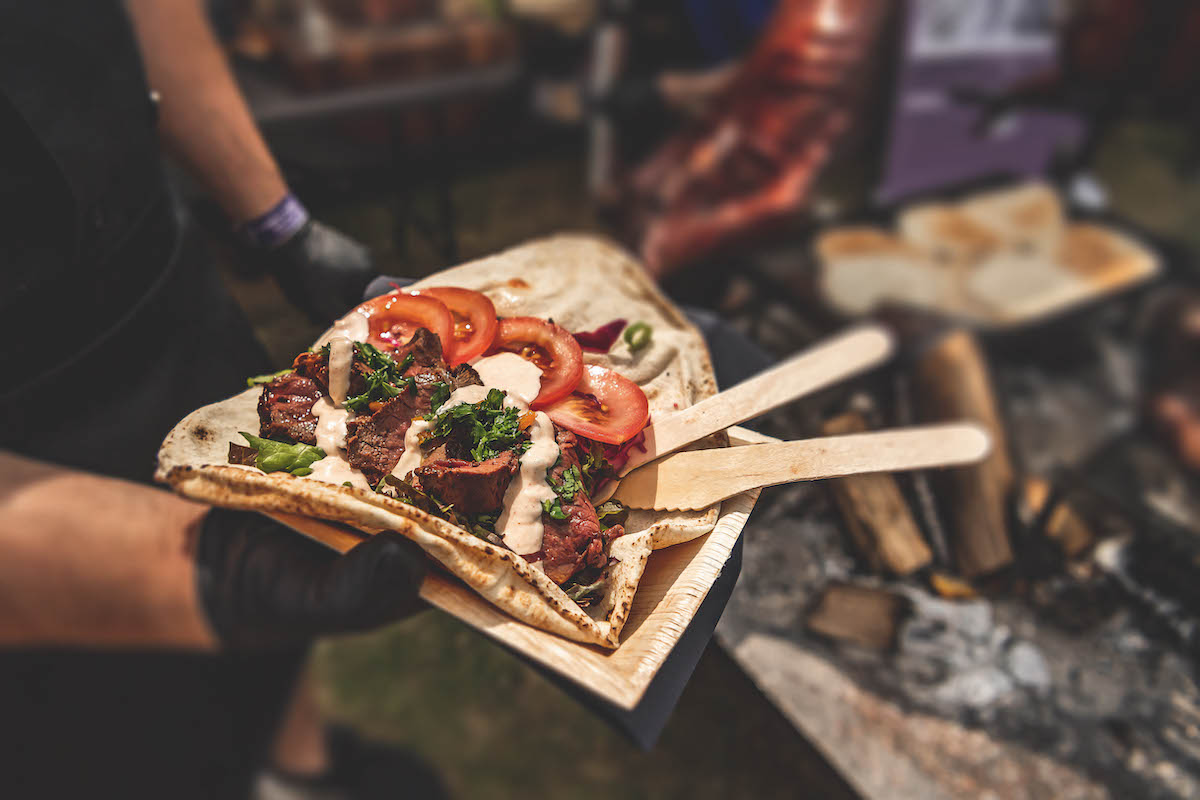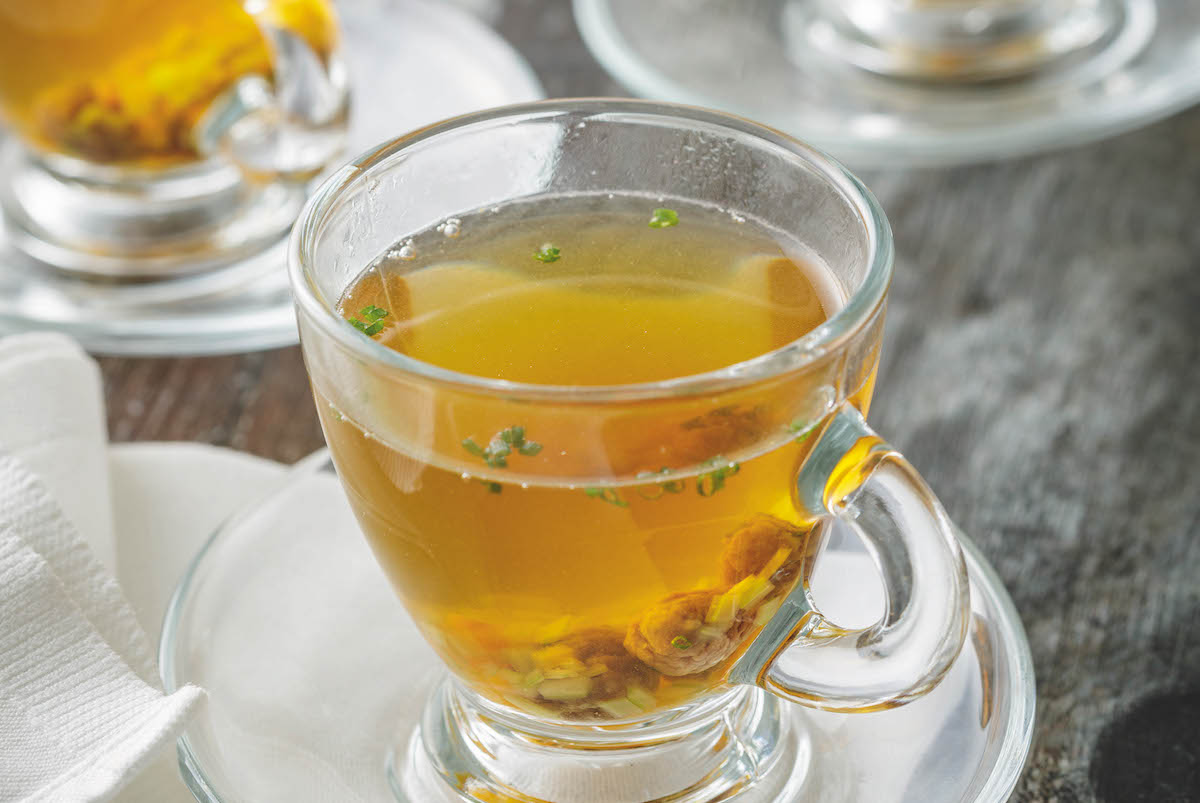Mike Robinson: A cookery school masterclass using venison

There can be few more enjoyable ways of spending an evening – if in London – than visiting The Harwood Arms, a gem of a pub in the Fulham backstreets. It is the only Michelin-starred pub in the capital and part-owner/chef Mike Robinson serves fine bitter and bar snacks – the venison Scotch eggs and the roe deer and walnut terrine in particular. Mike Robinson shoots all of the venison served in The Harwood Arms himself (the same goes for sister pub The Pot Kiln) and also runs the Mike Robinson Game and Wild Food Cookery School in West Berkshire. He is a man who is serious about eating the best of British game and it wasn’t long before I was sampling the venison course taught by the man himself.
Every venison pie starts with a kill and gralloch
The course I was on is described as the ‘full’ venison course. It starts with a short drive to a nearby deer park. It is plainly not possible to take 14 people wild deer stalking so for this first part of the course Mike Robinson talked us through the selection of a sika pricket as a suitable cull beast. Then he shot it. We were shown how to gralloch and inspect the carcass, and then returned to the school for skinning and butchering.
Waiting in the kitchen was the carcass of a fallow deer shot the day before. From this point on the process was very much hands-on. Mike Robinson first demonstrated the beginning of the skinning process on a work surface, and then raised the half-skinned carcass on a gambrel for us willing students to complete the job. Safe to say it was not as easy as Mike Robinson had made it look with his experienced hands. Consummate professional that he is Mike Robinson stressed and repeatedly reinforced the importance of hygiene and food safety throughout the day, and the love and respect he has for his quarry is evident in everything he does.
 The hearty venison burger is one to try if you’re new to deer meat and don’t want to stray too far from your comfort zone.
The hearty venison burger is one to try if you’re new to deer meat and don’t want to stray too far from your comfort zone.
After the carcass had been skinned Mike Robinson began by taking off the front legs and shoulders, followed by the trimming of its ribs before taking off the back legs. At each stage he showed us how to inspect the meat for signs of damage or disease and how to cut to ensure minimum loss of meat. All of the trimmings were reserved and, having neatly jointed the deer, he removed the shank from the haunch and seam-butchered the leg into The Pot Kiln’s trademark pavés (steaks) – ripe for cooking. My mouth had already started watering and by the time Mike Robinson had shown us how to break down the rest of the carcass and put the remaining meat into bags of marinade for Moroccan venison kebabs, I was ravenous. It was perfect timing for the cookery class to begin.
To start we used a meat saw to produce Bucklebury chops (the venison equivalent of the Barnsley chop), then we put the trimmings from the pavés through a mincer to make venison meatballs, with each of us being responsible for preparing and adding an ingredient. We chopped the remaining meat into chunky pieces to make venison chilli con carné.
Meanwhile, the fillet was painted with a teriyaki dressing and put in a hot smoker for half an hour and, whilst the flavour of the smoke was being absorbed, the kebabs were popped under a hot grill and Mike Robinson’s sous chef made some flatbread. By this point the smell in the kitchen was almost too tantalising.
The healthiest meat
The kebabs were wolfed down as a pre-lunch appetiser. There was a little of the meatball mixture left over and, as Mike Robinson doesn’t do waste, it was quickly formed into koftas, which were grilled and eaten with a pre-lunch drink. The smoked, warm teriyaki-glazed fillet was now ready and sliced very thinly. The result was delicious, as were the pavés. Having already devoured our mini-feast, next we were invited to move next door to the dining room where we would have the pleasure of sampling one of Mike Robinson’s signature dishes for luncheon: venison meatballs in tomato sauce with linguine.
Unsurprisingly, the conversation was about deer – specifically, how healthy venison is. It contains about a third of the fat of beef, less fat even than a skinned chicken breast, and is low in cholesterol and therefore suitable for those on a low-cholesterol diet. If this wasn’t impressive enough, it is high in Omega 3, is a plentiful source of a host of B vitamins, plus protein, zinc, iron and selenium. As humans, we have evolved to eat it and we appear to have been doing so for some 50,000 years. So, why don’t we do so more often? The Daily Telegraph recently ran an article entitled “Eat venison to save Britain’s countryside”, saying that: “deer are largely responsible for the decline of birds like the nightingale because of the damage they cause to wild flowers, brambles and shrubs.”
Field-shot deer gives the best-tasting venison
So, by eating venison everyone appears to be a winner. It is not just the eating that is important, though. Venison is incredibly tender and, although this of course varies with the age of the animal, what is also important is the way in which it is killed. The more stress an animal experiences when it is slaughtered, the more adrenalin is in its system and the more blood flows into its muscles, both of which affect the flavour. Shooting deer wild is the best method and even farmed deer may be field-shot in the European Union. This means there is none of the stress associated with transporting animals to an abattoir, and the overwhelming likelihood is that wild deer won’t even have seen their stalker before they are shot. End result? Better for the deer and better for the diner.
 Venison is a low-fat and low-cholesterol yet taste-packed option, and as this potted venison dish suggests, it’s just as versatile as beef, lamb, pork or chicken.
Venison is a low-fat and low-cholesterol yet taste-packed option, and as this potted venison dish suggests, it’s just as versatile as beef, lamb, pork or chicken.
You may not be aware that you can even get hold of wild venison online: there are a number of companies that will deliver fresh, unfrozen, beautifully butchered venison to your door the day after ordering. Some supermarkets sell venison too, but it may well be farmed and from New Zealand, which might defeat the “eat local” message.
There is of course another way of obtaining wild venison: shoot it yourself. Interestingly, on the cookery course I attended, only a handful of people shot at all and none had ever been stalking; Mike Robinson was not surprised by this. He pointed out it was a cookery school and not a stalking school, but for those who have attended the full venison course, there is another course available which is described as ‘one-to-one’.
I was delighted to see there were some definite converts on my course who were keen to shoot their own deer, put into practice what they had been taught and take advantage of Mike Robinson’s expert tutelage again in the future.
Whilst this course is not for the faint-hearted, it is superb fun and hugely informative, both for the novice and for experienced stalkers looking to improve their cookery skills. I can’t wait to do it again.
Mike Robinson’s recipe for Moroccan venison kebabs
Ingredients
As much diced shoulder of venison as you wish to eat
A pinch of ground coriander seeds
A pinch of nigella seeds
A pinch of ground turmeric
A pinch of ground cumin
Runny honey
Juice and zest of a lemon
Grated garlic
Some chopped fresh mint
Fresh chillis
Salt and pepper
Crème fraiche or yoghurt
Method
Mix the spices together and then add the honey, lemon and other ingredients to make the marinade. Marinade the venison in the fridge for 24 hours if possible. Thread the venison onto skewers and pop under a hot grill or on a barbecue for about ten minutes or so for well done. Serve on a flat bread with a tomato, onion and coriander salsa and a little yoghurt dressing.
For more information, email: info@gamecookeryschool.co.uk or visit www.gamecookeryschool.co.uk. To buy venison online visit www.harwoodgame.co.uk








